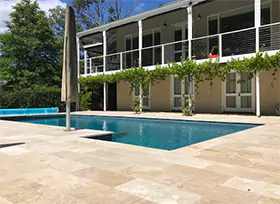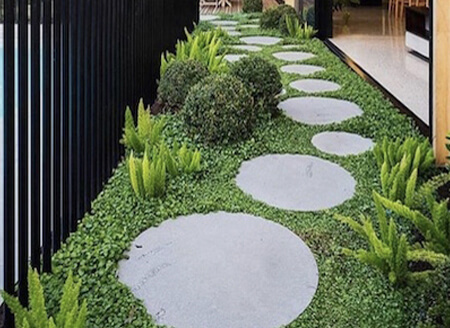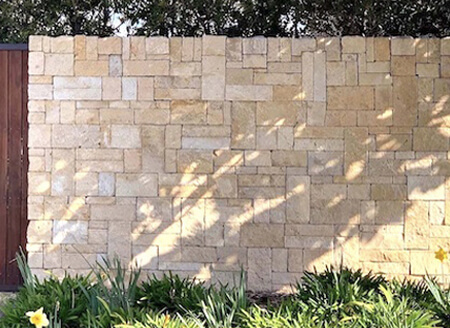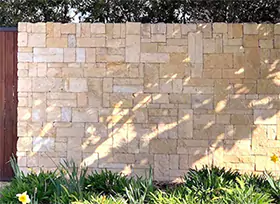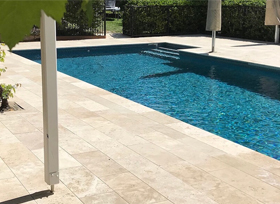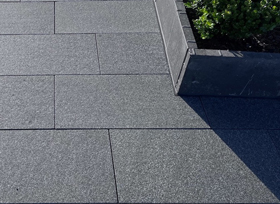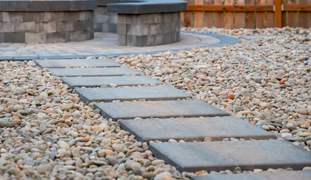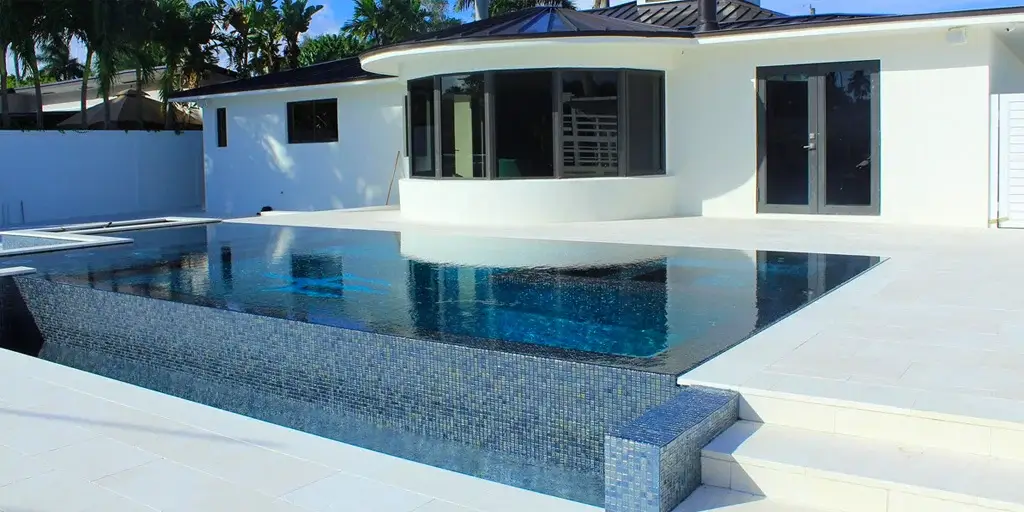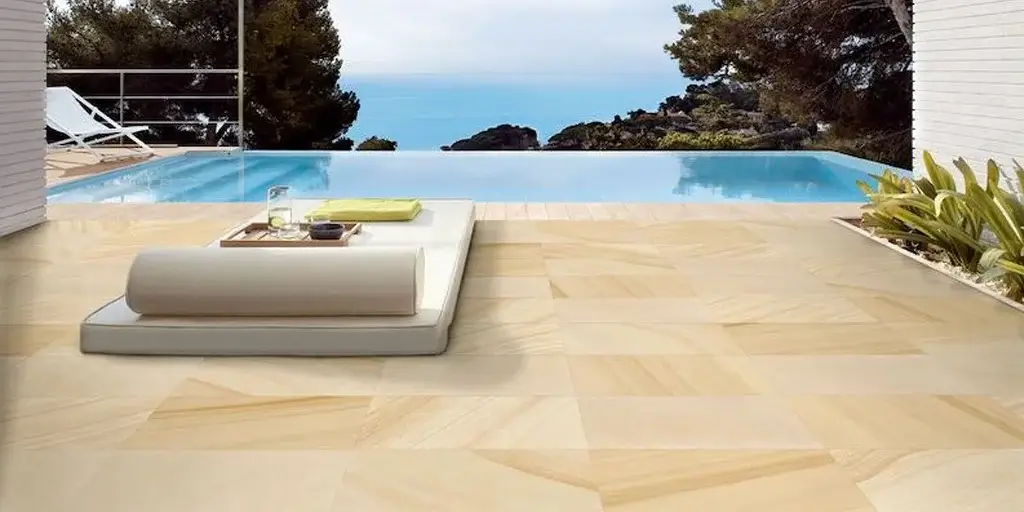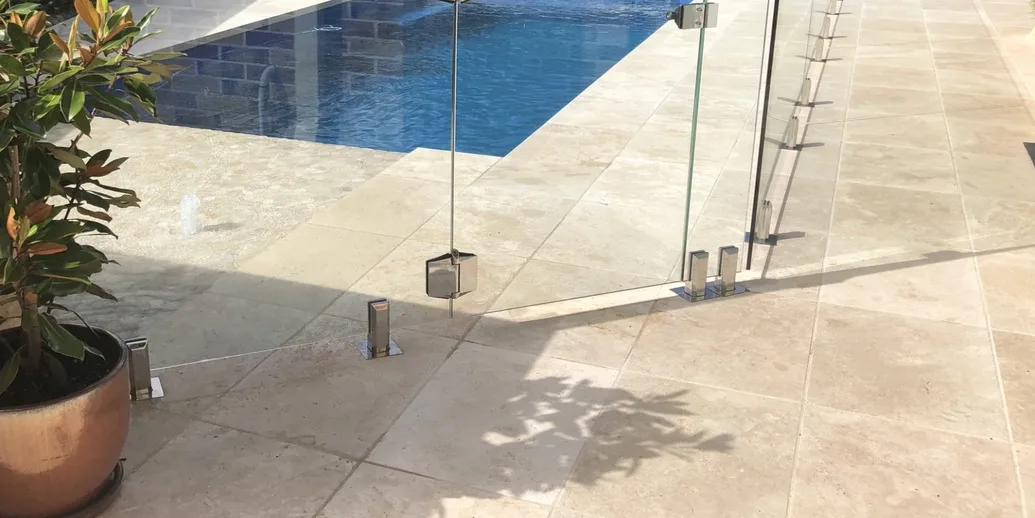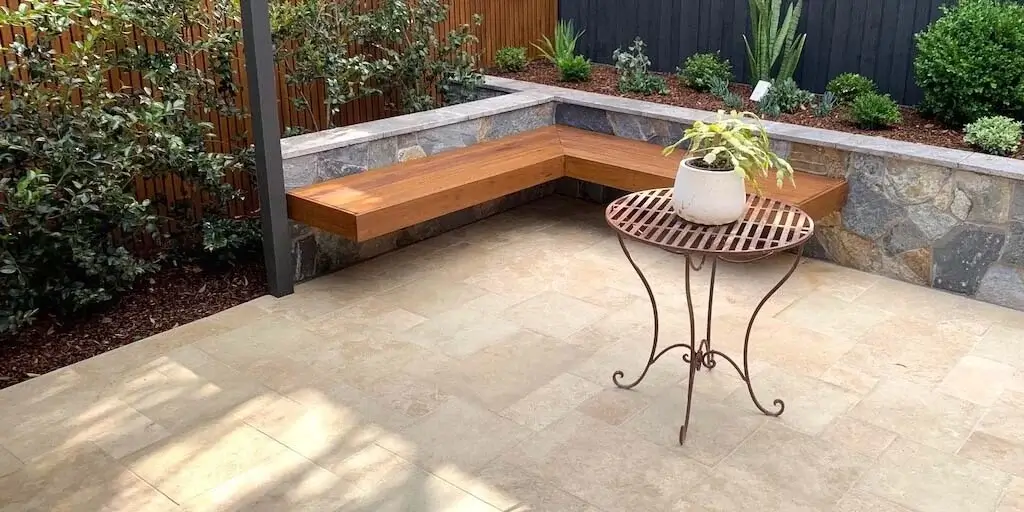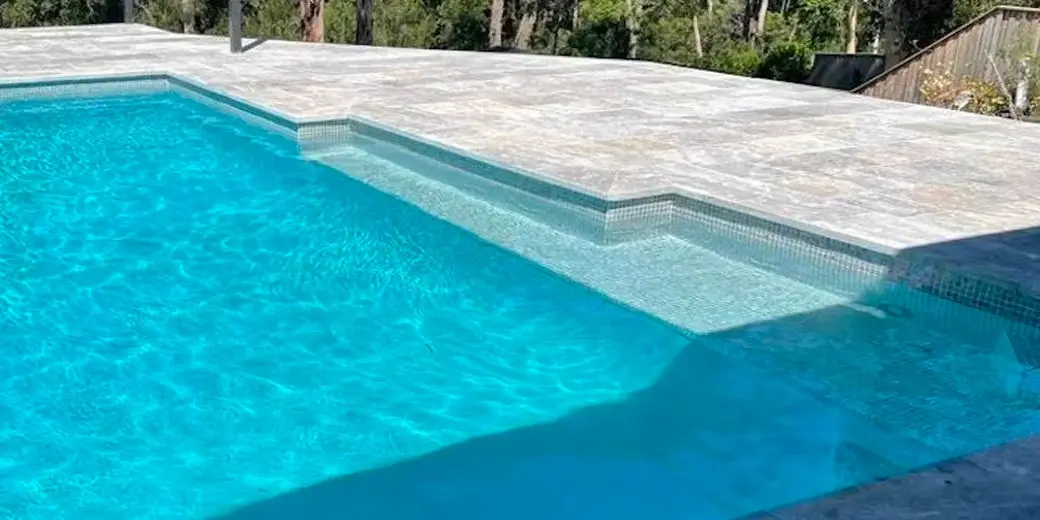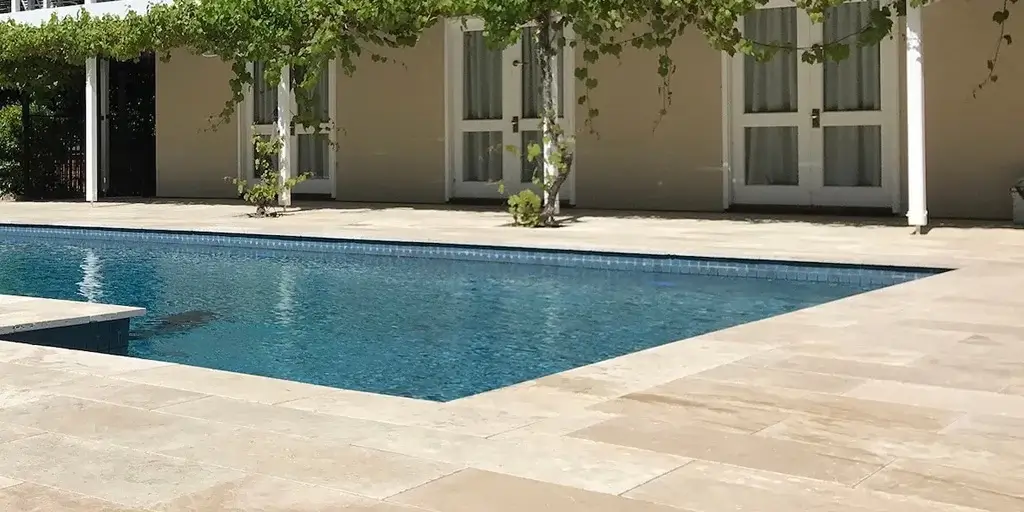Installing a new pool or renovating an existing one takes time and planning; the ideal pool necessitates more than just digging a hole and filling it with chlorinated water. You must examine the pool's interior and surroundings, such as the stone around the pool's edge, as well as the fencing, heating, lighting and water type.
Understanding Pool Coping Tiles
Pool coping tiles are the edge or border that surrounds a swimming pool. It serves both an aesthetic and utilitarian purpose. On the one hand, pool coping can significantly improve the overall appearance of your pool area; think of it as the finishing touch that brings everything together. However, it also provides a practical purpose by covering the pool's edge and preventing water from spilling onto the adjacent deck or patio.
Do You Really Need Coping Around Your Pool?
In a nutshell, sure. Coping is required to design any pool, whether above ground or inground. It not only gives the pool a clean, polished aspect, but it also protects the pool structure from water damage. If you're planning any pool renovations, make sure to include the cost of coping in your budget.
Exploring Various Pool Coping Styles
When it comes to pool coping tiles, we have two types to choose from.
Bullnose Copings
Bullnose coping tiles are one of them. They got their name from the rounded edge resembling a bull's snout. They safeguard swimmers from injuries and give the pools a velvety appearance. In contrast to typical coping tiles with squared edges, bullnose copings feature a rounded edge on one or both sides. This curved shape eliminates sharp edges, reducing the chance of accidents resulting in cuts or injuries. They can be chosen to contrast or complement the pool deck. Material selection is influenced by personal preferences, intended aesthetics and durability requirements.
Drop Edge Copings
Pool coping tiles with a drop face or drop edge features a 90-degree drop, giving the pool a clean appearance. Drop-edged copings are commonly employed in contemporary pool designs to make pools appear larger. Drop edge copings have a horizontal ledge or "drop" extending around the pool's outside. This drop creates an aesthetically beautiful impression and serves a practical purpose by diverting water from the pool's structure. Typically, the drop edge of the coping is rebated or recessed, allowing it to overhang the pool's edge slightly. This design reduces the chance of water damage. It improves pool area functionality by keeping water from running back into the pool or collecting on the coping.
Determining the Optimal Thickness for Swimming Pool Coping Tiles
The ideal thickness for swimming pool coping tiles is commonly measured in millimetres (mm). A 30 to 50mm thickness is popular for natural stone tiles such as Travertine or Slate, giving both durability and visual appeal. Thinner tiles, ranging from 12 to 25mm, may be ideal for porcelain or ceramic alternatives. When selecting the optimal coping tile thickness for a millimetre pool, consider traffic, freeze-thaw resilience and conformity to local building requirements.
5 Crucial Factors in Choosing Pool Coping Tiles
Material: When selecting pool coping tiles, keep a few factors in mind. First and foremost, you must select a material. As previously stated, ceramic or porcelain tile, stone, or concrete are the most common options. Each material has its own advantages and disadvantages, so do your homework before choosing.
Size: Another key factor to consider is size. Ensure the tiles you select are large enough to cover the entire pool coping area. Otherwise, water could spill over the edge and onto the deck or patio.
Climate: Third, think about the weather in your area. If you reside in a rainy environment, you must choose weather-resistant cloth.
Cost: Fourth, consider your budget. Pool coping may be costly, so selecting a material that you can afford is critical.
Style: Finally, you must settle on a style. Are you looking for something traditional and understated? Or are you seeking something more contemporary? There are limitless style alternatives, so take your time browsing through them until you discover something that appeals to you.
Guidelines for Successful Pool Coping
Do's:
Make an adequate plan: Start with a well-thought-out plan. Think about the design of the pool, the surrounding scenery and the overall theme you want to achieve.
Select high-quality materials: Invest in high-quality coping materials that will survive pool chemicals, weather and heavy use. Natural stone, concrete and pavers are popular because of their durability.
Prioritise safety: Make sure the coping material has a slip-resistant surface to improve safety, especially in rainy weather. To avoid accidents and injuries, safety should be a major focus.
Consider this: Choose coping allowing swimmers to rest their arms or bodies. This improves the pool experience and adds a touch of luxury.
Maintain consistency: Keep the coping concept consistent with the pool's design and surrounding architecture—consistency results in a visually pleasing and harmonious outdoor environment.
Properly seal: Seal the coping material with a high-quality sealant to prevent it from water damage, UV radiation and chemical exposure. Regular sealing extends the life of the coping and keeps it looking good.
Allow for expansion joints: Include expansion joints to allow for natural movement and to prevent cracking. This is especially significant in areas with varying temperatures.
Don'ts:
Ignore proper installation: Simplify the installation process. Improper installation might result in difficulties such as uneven coping, water leakage and structural issues in the future.
Overlook drainage considerations: Ignore appropriate drainage. Inadequate drainage can cause water to build, causing erosion and jeopardising the coping material's integrity.
Ignore climate considerations: Ignore the effect of weather on pool coping. Certain materials may not perform well in intense heat or cold, so choose appropriate materials for your region.
Reduce maintenance: Ignore routine maintenance. Regular cleaning, inspections and timely repairs are required to keep the pool coping in good working order.
Use non-slip sealants: Apply sealers that make the coping too slippery. Non-skid sealers strike a compromise between safety and protection.
There is a large selection of pool coping tiles available with Stone Depot. You will be able to choose the one that best matches your personality and style if you conduct adequate study. Remember to always ask for help anytime you are unsure. This will save you valuable time and resources. If you need a professional to assist you with your installation, we have a team of stone specialists who you can rely. To obtain a quote, please visit our website.
*Disclaimer: All information and advice given above in the blog are to the best of our knowledge. Please reconfirm at your end before execution.



